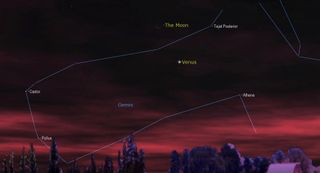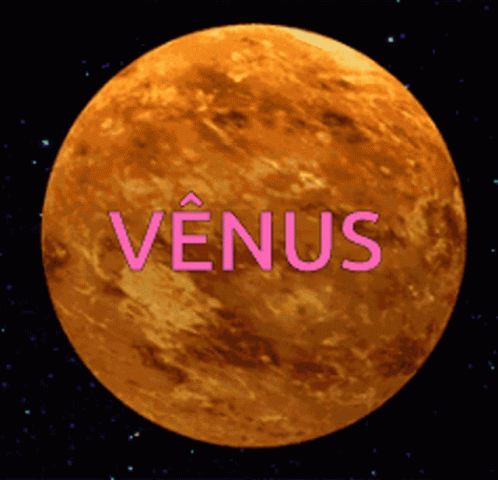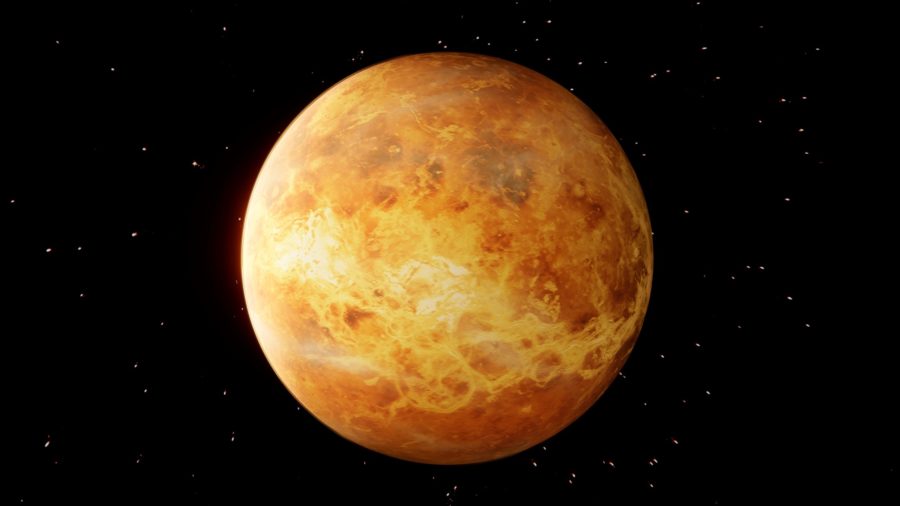Venus- “The pair will be close enough to share the same field of view in a pair of binoculars.”
The following written content by Daisy Dobrijevic

Venus will shine brightly below the moon before sunrise on Tuesday (July 26) (Image credit: Starry Night)
Look to the east-northeastern sky before sunrise on Tuesday (July 26) to catch the thin crescent moon slither across the sky above Venus.
Venus will be shining at a bright magnitude of -3.9, just several finger-widths (or 4 degrees celestial south) to the lower right of the old moon, according to astronomer Chris Vaughan of Astrogeo.ca(opens in new tab), who prepares Space.com’s monthly Night Sky calendar in cooperation with Simulation Curriculum. (On the magnitude scale used by astronomers, lower numbers signify brighter objects.) The duo will appear close enough to share the view with a pair of binoculars.

Eagle-eyed skywatchers catching the pair shortly after they rise at around 4 a.m local time will also be able to see some of the stars of the Gemini constellation (Alhena, Pollux, Castor and Tejat Posterior) shine around them.
The exact time of the event varies depending on your specific location, so you’ll want to check out a skywatching app like SkySafari or software like Starry Night to check for times specific to you. Our picks for the best stargazing apps may help you with your planning.
On Thursday (July 28) the moon will reach its new moon phase at 1:55 p.m. EDT (1755 GMT). It will then conclude its monthly planetary “meet and greets” by approaching Mercury on Friday (July 29) shortly after sunset.
Another skywatching event to look out for this week is asteroid Juno appearing to reverse direction on Thursday. “Eastward prograde motion of the main belt asteroid designated (3) Juno through the background stars of western Pisces will slow to a stop,” Vaughan wrote. Juno will then commence a westward retrograde loop that will last until late October. Read more from Space.





